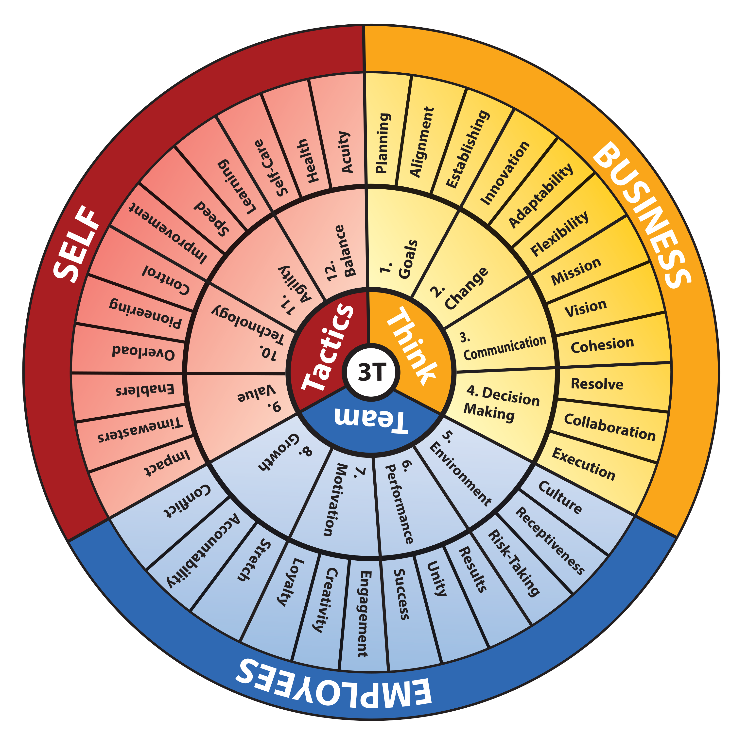Announcing the 2016 Productivity University Series!
Join The Productivity Pro, Inc. for a virtual keynote series by our founder Laura Stack, MBA, CSP, CPAE, who will be providing time management education for leaders, based on her newest book, Doing the Right Things Right: How the Effective Executive Spends Time (Berrett-Koehler, January 2016).
 Doing the Right Things Right details how today’s leaders and managers can obtain profitable, productive results by managing the intersection of two critical values: effectiveness and efficiency. Effectiveness, Stack says, is identifying and achieving the best objectives for your organization—doing the right things. Efficiency is accomplishing them with the least amount of time, effort, and cost—doing things right. If you’re not clear on both, you’re wasting your time. Stack identifies twelve practices—one a month for a year—that will enable leaders to be effective and efficient. Stack groups these practices into three areas where they spend their time, called 3T Leadership:
Doing the Right Things Right details how today’s leaders and managers can obtain profitable, productive results by managing the intersection of two critical values: effectiveness and efficiency. Effectiveness, Stack says, is identifying and achieving the best objectives for your organization—doing the right things. Efficiency is accomplishing them with the least amount of time, effort, and cost—doing things right. If you’re not clear on both, you’re wasting your time. Stack identifies twelve practices—one a month for a year—that will enable leaders to be effective and efficient. Stack groups these practices into three areas where they spend their time, called 3T Leadership:
Strategic Thinking (Business)
Teamwork (Employees)
Tactics (Self)
The Productivity University will use the following model:
For each practice, Stack offers advice from her 25 years in the trenches working with thousands of leaders globally. You’ll receive scores of new ideas on how you, your team, and your organization can boost productivity.
Assess Yourself
Take the online 3T Leadership Assessment from Doing the Right Things Right to determine if this course is right for you.
Dates and Times
All 2016 sessions are held at 10:00 PT / 11:00 MT / 12:00 CT / 1:00 ET:
1. January 22—GOALS: Set Objectives and Align Strategy
Goals boost team productivity because they sow seeds of hope. They give your team something to strive for, especially in a positive, non-punitive environment where you provide valuable feedback on a regular basis. Goals also establish promises you and your team can work toward as you fine-tune performance and boost productivity. In addition to setting goals, regularly reevaluate your progress to ensure you’re on the right path, and consider the possibility of course corrections that might serve you better.
2. February 12—CHANGE: Embrace Innovation and Adaptability
As the saying goes, the only real constant is change—and it’s something we must all deal with and accept. There was a time not long ago when executives paid lip service to innovation, but were the first to block it. Now, there’s no choice but to innovate if you want to remain relevant. Leaders have become much more adept at plugging innovation into their business and corporate cultures. More often than not, the changes passing through our organizations transform us in ways we must repeatedly take into account.
3. March 11—COMMUNICATION: Share Mission, Vision, and Expectations
Effective communication sets profitable, productive organizations apart from the also-rans. It can take many forms, but the factors that work best are plain talk, honesty, and cooperation. Your communication must be simple and straightforward, especially when communicating the mission. In some cases, particularly when working with other leaders, you may have to butt heads politely and cautiously. Work hard to sell your ideas, not just to give an advantage to your team but also to the organization as a whole.
4. April 8—DECISION MAKING: Resolve and Execute Decisions Promptly
Too often, indecision rules in the workplace, because decision-makers are afraid to make mistakes. Yet the occasional mistake is the price of effective decision-making; it’s better to take a wrong turn than no turn at all. Once you’ve made a decision, trade theory for action and start moving. Don’t assume that disagreement within the team is something you should squelch. Friction can be positive, as long as helps lets you see all sides of the story before you make a final decision.
5. May 13—ENVIRONMENT: Build an Open Team Structure
Sometimes a team culture forms spontaneously, evolving out of a set of core values combined with corporate mission, vision, and basic goals. But the efficient, effective executive takes a direct hand in guiding team culture while working to maintain a positive culture where it already exists. The work environment has recently moved toward an open structure marked by increased agility, flexibility, and speed. To get ahead, stop overthinking business, fearing change, and losing focus. Simplify the complex challenges, and bounce back when something doesn’t work as expected.
6. June 10—PERFORMANCE: Forge a Results-Oriented Team
The best teams are so close-knit and results-oriented that productivity is a given. It depends on trust and mutual respect, factors that naturally boost productivity. Everyone on the team must act as integral and active parts of the team. Move forward with positive energy, developing the talents of your team members so you’ll inevitably enhance performance. A few rough edges may prove useful, by generating sparks of creativity and innovation that boost productivity even higher. There may be times when you’ll have to be ruthless to revitalize your team, clearing out negative attitudes and unprofitable processes rather than people.
7. July 8—MOTIVATION: Harness Creativity and Loyalty
Good leaders internalize the factors that motivate their team members, so they can use them to boost productivity. Invite your teammates on a journey by using the ABCs of motivation. Empower them in ways that make them your partners in success, asking for and considering their ideas and opinions. Meanwhile, take hold of your own creativity, finding ways to harness it, passing those ideas on to your teammates. Never lose sight of the fact that they are your teammates; you’re a team member, not just a leader. Always seek employee loyalty. This won’t come naturally, so find ways to demonstrate your gratitude for a job well done and tighten team cohesion at every turn.
8. August 12—GROWTH: Emphasize Continuous Improvement
At the team level, cohesion depends on growing together as a team, until individual team members interlock smoothly into one efficient entity. A mature team develops features that naturally boost productivity. The effort starts with you. You can clarify these factors and avoid problems by using metacognition to learn not only how you think, but how your team members think as well. Among other things, a quality leader accepts both credit and blame when it’s due. He or she also acts on constructive criticism without overreacting to the pain that accompanies it. Using your emotional intelligence while balancing your head and heart serves you well here.
9. September 9—VALUE: Focus on High-Dollar Activities
Your skill at time management determines how well you manage not only your own productivity, but also your team’s. Most of us try to handle both in a manner both efficient and effective, but many leaders don’t do this well enough. We often waste more time than we should by trying to multitask or by letting other people steal our attention a minute at a time. Limit your day-to-day activities to those that make best use of productivity at the team level.
10.October 14—TECHNOLOGY: Master Data Handling and Workflow
Technology has been a double-edged blessing to business. On one hand, it’s helped make modern workers more productive. Cloud computing alone has greatly simplified access to anywhere/anytime information. However, technology can be tyrannical. Not only do you risk a flood of new work triggered by a “timesaving” invention, new technology sometimes makes it easier for others to steal proprietary information. Worse, you can become so dependent on your technology you can’t live without it.
11. November 11—AGILITY: Maximize Speed and Flexibility
These days, strength flows from agility. That means responding to each change with speed and flexibility, whether it’s a new client demand or a paradigm shifting without a clutch. Handling new challenges on the fly, swerving onto a new course, stopping suddenly and reversing direction—it’s all in a day’s work for the modern business professional. At the end of the day, all that really matters is results. No one can afford to just mark time. Nor can you let paralysis or procrastination slow you down, and you certainly you can’t ignore Team ROI.
12. December 9—BALANCE: Sustain Your Physical and Mental Health
You might think that the need for a decent work/life balance would be obvious to anyone, but white-collar workers tend to be more driven than most. We forget that brainwork can be just as tiring as physical labor. Sometimes, this results in overwhelm, and ultimately a workflow breakdown you have to rebuild from. This takes time, so it’s better not to go there in the first place. Don’t work yourself to death. Make a priority of maintaining your health through the proper diet, hydration, exercise, sleep, and breaks. You especially have an obligation to take care of your mental health.
Book Purchase (separate purchase required)
It’s highly recommended but not required that attendees purchase a hardcopy of Doing the Right Things Right: How the Effective Executive Spends Time to mark up and study. Books will be released by Amazon.com on January 18 (in time for the first session).
What is the Investment?
$299 per person for one year of professional development. (This is a single-user license not to be shared by others. Each leader requires individual registration.)
$199 by December 1 (early bird rate)
Included in Your Investment
- Twelve monthly one-hour virtual keynotes by Laura Stack during 2016
- Twelve corresponding workbooks to follow along, take notes, and complete activities
- A recording of each session to review at your leisure (or view if you can’t attend live)
- “Homework” assignments to complete in between Laura’s presentations
- A digital copy of The Executive’s Personal Journal, a companion to Doing the Right Things Right (to record your reflections as you complete the action items in between sessions)
- A Leader’s guide and a Discussion guide (for group study with your leadership or senior management team if multiple people are registering)
Who Should Register?
In today’s business vernacular, we usually assume an “executive” is someone in a senior leadership position. However, Webster’s defines an executive as “a person or group appointed and given the responsibility to manage the affairs of an organization, and the authority to make decisions within specified boundaries.”
So in reality, an executive is someone who executes. This can be almost anyone with the authority to make significant decisions and whose time is spent producing value and/or managing people for the benefit of the organization:
- A senior leader
- A middle manager
- A front-line supervisor
- A first-time manager
- An emerging leader
- A high-potential employee
- An individual contributor in a leadership role who hasn’t received a title.
About Laura Stack
 Laura Stack, MBA, CSP, CPAE is an award-winning keynote speaker, bestselling author, and noted authority on employee and team productivity. She is the president of The Productivity Pro, Inc., a company dedicated to helping leaders increase workplace performance in high-stress environments. Stack has authored seven books, including her newest work, Doing the Right Things Right: How the Effective Executive Spends Time (Jan. 2016). She is a past president of the National Speakers Association and was inducted into its exclusive Speaker Hall of Fame (with fewer than 175 members worldwide). Stack’s clients include Cisco Systems, Wal-Mart, and Bank of America, and she has been featured on the CBS Early Show, CNN, and the New York Times. Email [email protected] for more information on Laura Stack’s presentations.
Laura Stack, MBA, CSP, CPAE is an award-winning keynote speaker, bestselling author, and noted authority on employee and team productivity. She is the president of The Productivity Pro, Inc., a company dedicated to helping leaders increase workplace performance in high-stress environments. Stack has authored seven books, including her newest work, Doing the Right Things Right: How the Effective Executive Spends Time (Jan. 2016). She is a past president of the National Speakers Association and was inducted into its exclusive Speaker Hall of Fame (with fewer than 175 members worldwide). Stack’s clients include Cisco Systems, Wal-Mart, and Bank of America, and she has been featured on the CBS Early Show, CNN, and the New York Times. Email [email protected] for more information on Laura Stack’s presentations.
Registration
REGISTER HERE, then click “Add to Cart” below and hit enter. Then scroll to the top of the page to see the shopping cart on the right. Click “Checkout” and enter case-sensitive coupon code Early2016 for your Early Bird Discount!
Questions?
Email our office manager, Jin Voelkelt, at [email protected].




